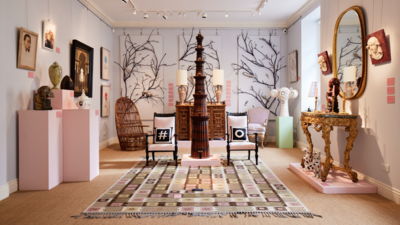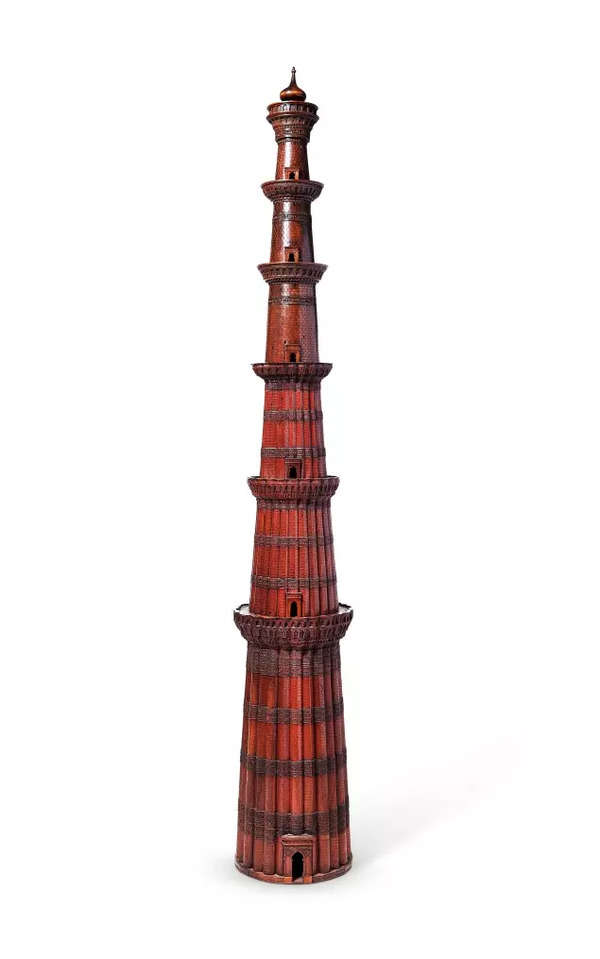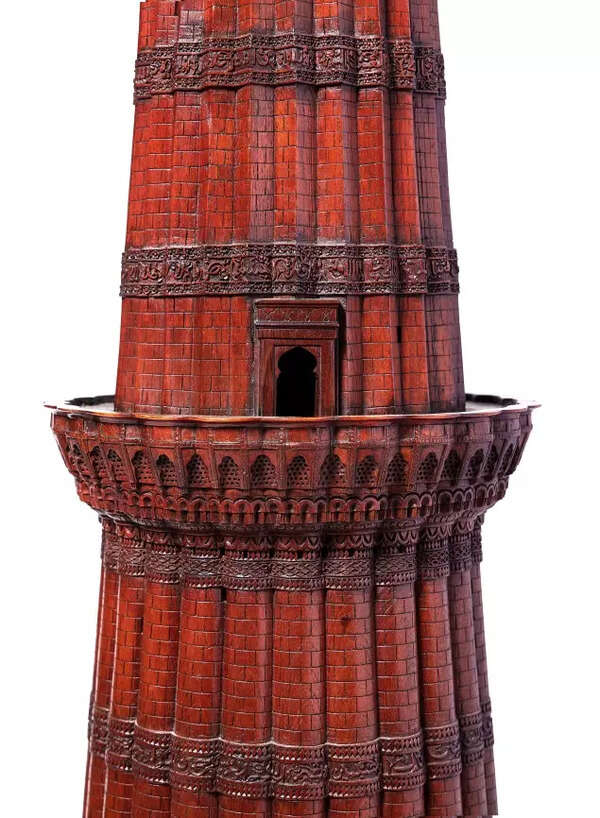- News
- World News
- UK News
- Qutb Minar model in teak to go under the hammer at UK auction house
Trending
Qutb Minar model in teak to go under the hammer at UK auction house

A 19th century Indian teak model of the Qutb Minar will go under the hammer at Dreweatts in Newbury, in UK
LONDON: A 19th-century, 2.5-metre-tall teak model of the Qutb Minar as it looked in 1828 with six storeys is going under the hammer on Wednesday at UK auction house Dreweatts, with an estimate of Rs 20 to Rs 30 lakh.
The item is from the private collection of the late art collector Count Manfredi della Gherardesca, a wealthy Italian count who died in 2022 at the age of 60.
"This model represents the red sandstone tower, the Qutb Minar in Delhi, built in 1193-1230 for Qutb ud-Din-Aibak, the first Sultan of the Delhi Sultanate...to cast the shadow of God over both east and west," states the auction brochure.

An anonymous buyer bought it from Gibbs, who then put it up for sale at Christie's in 2018, where Manfredi bought it.
"Manfredi told me he walked into the gallery, it was displayed in the middle and he just decided he had to have it. It has such a great presence and is so detailed in its construction. Manfredi knew the model Gibbs had was rare. There is only one other model known to be in existence in the UK," Joe Robinson, head of the Manfredi sale, said.

The model Gibbs purchased showed the minaret as it did prior to the rebuilding of the upper stories by Firoz Shah between 1288 and 1293. The anonymous buyer added the upper stories in poplar wood to reflect how it looked after Colonel Robert Smith added a controversial cupola to it in 1828, creating a sixth storey. This is the version going under the hammer.
That cupola was then taken down from the structure in 1848 and reinstalled on the ground, where it is known as "Smith's Folly".
"Unlike the Middle East mosques at the time, what you see is a fusion of Islamic architecture with the craftsmen who actually made it, who were Hindu. It is an incredibly symbolic and important building. It is about the formation and current structure of India," Robinson said.
The item is from the private collection of the late art collector Count Manfredi della Gherardesca, a wealthy Italian count who died in 2022 at the age of 60.
"This model represents the red sandstone tower, the Qutb Minar in Delhi, built in 1193-1230 for Qutb ud-Din-Aibak, the first Sultan of the Delhi Sultanate...to cast the shadow of God over both east and west," states the auction brochure.

Its provenance can be traced to a sale at Christie's in 2000 of the collection of antiques dealer Christopher Gibbs. It is not known where Gibbs bought it from, but since it was made of teak, it is thought it could have been made in India.
An anonymous buyer bought it from Gibbs, who then put it up for sale at Christie's in 2018, where Manfredi bought it.
"Manfredi told me he walked into the gallery, it was displayed in the middle and he just decided he had to have it. It has such a great presence and is so detailed in its construction. Manfredi knew the model Gibbs had was rare. There is only one other model known to be in existence in the UK," Joe Robinson, head of the Manfredi sale, said.

The model Gibbs purchased showed the minaret as it did prior to the rebuilding of the upper stories by Firoz Shah between 1288 and 1293. The anonymous buyer added the upper stories in poplar wood to reflect how it looked after Colonel Robert Smith added a controversial cupola to it in 1828, creating a sixth storey. This is the version going under the hammer.
That cupola was then taken down from the structure in 1848 and reinstalled on the ground, where it is known as "Smith's Folly".
"Unlike the Middle East mosques at the time, what you see is a fusion of Islamic architecture with the craftsmen who actually made it, who were Hindu. It is an incredibly symbolic and important building. It is about the formation and current structure of India," Robinson said.
End of Article
FOLLOW US ON SOCIAL MEDIA










